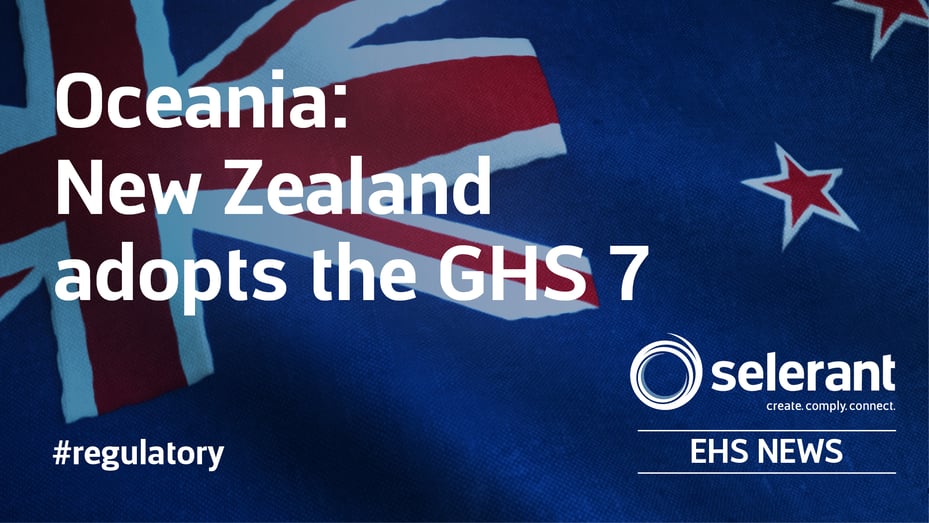
Oceania: New Zealand adopts the GHS 7
|
Regulatory
Posted By:
Trace One
New Zealand: the current situation

Last October 2019 the Environmental Protection Authority of New Zealand (EPA) proposed to update its current hazardous substance classification system to the seventh revision of the Globally Harmonized System (GHS 7).
Currently, the country manages hazardous substances under several different pieces of legislation with the key one being the Hazardous Substances and New Organisms Act (HSNO). This sets the criteria that designate a substance as hazardous, and also allows the setting of a framework that assigns particular hazard classifications to all substances that are designated as hazardous.
On August 4th 2020, EPA concluded the second consultation regarding the implementation of the GHS standard, updating its 2017 HSNO substance classification system.
What’s new?
The transition from the HSNO classification system to the GHS 7 standard provides alignment between the old HSNO groups with the GHS class / category system, with the advantage of less complexity and simplification of manufacturing and import processes. In accordance with the GHS building block approach, the following classifications will not be implemented:
- Acute toxicity, category 5: substances previously classified with the equivalent HSNO 6.1E for aspiration hazard will instead be identified with Aspiration toxicity, category 1
- Skin irritation, category 3, equivalent to HSNO 6.3B
- Aspiration toxicity, category 2
- Acute aquatic toxicity, categories 2 and 3
- Hazardous to the ozone layer
Meanwhile, the agency also introduced the additional hazard class of “substances that are hazardous to the terrestrial environment”. It is applied only to agrichemicals or active ingredients used in the manufacture of certain agrichemicals and corresponding to the HSNO 9.2A - D, 9.3A - C, 9.4A - C and 9.1D classifications.
The new standard applies from April 30th 2021, but it is possible to continue to use labels, safety data sheets and packaging in accordance with HSNO 2017 until April 30th 2025. This transitional period does not apply to substances approved after April 30th 2021 and substances subject to a group change with the GHS adoption, mainly aerosols previously non-flammable according to HSNO which become flammable with the transition to GHS 7.
For more information, please use the following link:
- EPA communication regarding the transitional period
- EPA webpage regarding the new classification system
- GHS Solution
Newsletter 138